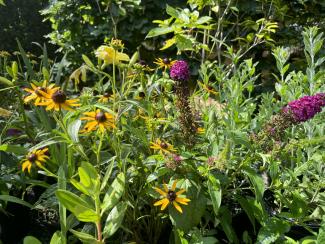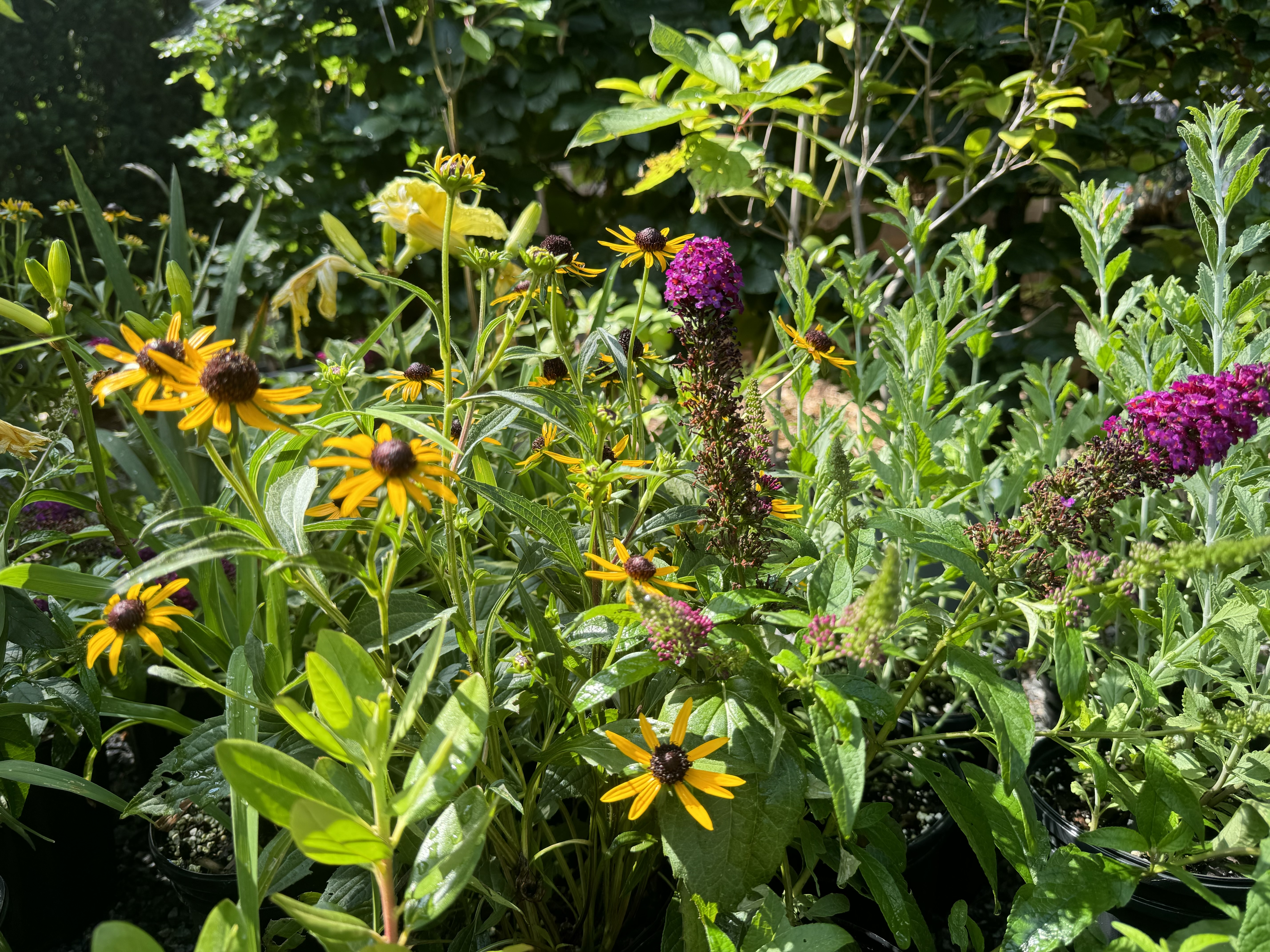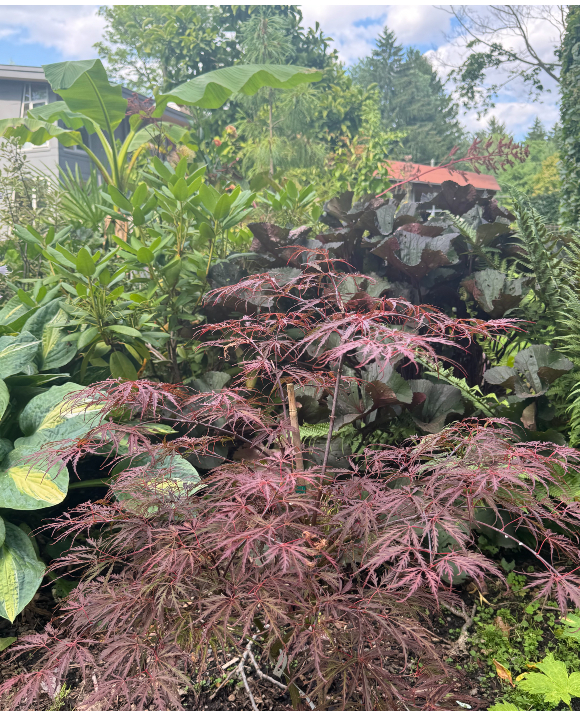
Gardening Through the Seasons: A Guide for Beginners and Seasoned Green Thumbs
Gardening offers a unique blend of physical activity, relaxation, and beauty that can be enjoyed year-round. Whether preparing a greenhouse for winter, planting a flower bed in spring, or simply pruning in the summer, these tips can help make your gardening experience more efficient and rewarding.
For this article, I interviewed Stacey McIndless, who has been gardening for over 40 years, though more actively since 2006. Her garden was part of the Thornhill Horticultural Society garden tour in 2022.
For Stacey, gardening has been both a passion and a way of life, offering relaxation, exercise, and a connection with nature. Whether you're just starting out or have years of experience, this article will cover essential tips for year-round gardening success, from winter greenhouse care to springtime planting.
The Importance of a Seed Exchange
Whether growing vegetables, flowers, or shrubs, seed exchanges are a fantastic way to diversify your garden without breaking the bank. As part of organizations like the Royal Horticultural Society (RHS), you can participate in their seed scheme, exchange rarer species, and connect with like-minded gardening enthusiasts. The RHS magazine, The Garden, regularly features advice and resources, including details on how to order seeds for every season.
Stacey takes advantage of her membership to the RHS to learn. The Garden magazine which is included in an RHS membership, is a great learning tool. Some seed suppliers and exchanges are closer to home, such as Hana Earth Gardens, a local seed supplier. Usually, there are Seedy Saturday events in the GTA during March and April. The Evergreen Brickworks event is just one of many. Stacey’s recommendation is to google search Seedy Saturday for an event close to home.
Winter Greenhouse Care
For those who maintain greenhouses, managing the colder months is crucial for plant health. With temperatures dropping, having a reliable heater in the greenhouse is a must. Stacey keeps her greenhouse between 40-45°F (45°F seems to work best for many plants) to keep them healthy without causing them to freeze. In addition, she installed a second thermostat set to 65°F, which can also help by automatically opening a vent if the temperature rises too high, ensuring plants don't overheat. Stacey’s greenhouse was custom-built with a vent. If your greenhouse doesn’t have a roof, it is important to be mindful of the effects of a sunny day on the temperature in any greenhouse, even if it is just a mini one with a domed lid on a windowsill.
Proper air circulation is key to preventing mold and keeping pests at bay. Stacey recommends installing two fans in your greenhouse, which can significantly improve air movement and reduce the risk of bugs affecting your plants.
Protecting Your Plants
As you prepare your garden for the fall and winter months, remember to protect your small trees, particularly newly planted trees and shrubs. Rabbits cause damage by eating the bark down to the wood, effectively girdling the plant and cutting off the flow of nutrients and water, particularly in the winter when they're searching for food. Small tree guards or other forms of protection will help prevent your young trees from being damaged.
To manage watering, especially in the summer heat, consider investing in an in-ground irrigation system that can be controlled through an app. This will ensure your plants receive water even if you're away. A friend or neighbour can also be a lifesaver during the hotter months when maintaining moisture levels is critical.
A Word on Power Outages
For those relying on electrical equipment in their greenhouse or garden, such as heaters or irrigation systems, it's wise to invest in a generator. Power outages can be disastrous, especially in winter, when a sudden loss of heat can damage delicate plants.
Preparing for Spring
As temperatures begin rise, it's time to move most of your greenhouse plants back outside. For Stacey, Spring is the busiest time of year for gardening, and you should expect to spend about 12-15 hours a week preparing the garden. Tasks such as planting, preparing beds, and fertilizing keep you busy. However, as the summer progresses, your work will decrease to around 6-8 hours weekly, with most of your time dedicated to weeding and pruning.
Low Maintenance Options
Not every gardener wants to spend hours each week maintaining their plants. For a lower-maintenance garden, consider adding hydrangeas, which are stunning but do require regular watering. Ornamental grasses are another option, adding texture and movement without much effort. For a splash of colour, Japanese maple trees, known for their striking purple hues, can be a dramatic focal point in any garden.
Where to Buy
When looking for plants, Northland Nursery in Hamilton is a hidden gem. It offers every plant for just $10, making it an affordable option for expanding your collection, whether you're adding flowering plants, trees, or shrubs.
Kim’s Nature in Markham is great for orchids, tropicals, succulents and related supplies.
Whistling Gardens and Vineland Nurseries are two good sources for collectible conifers and other rare and unusual woody plants.
Seek Guidance from Mentors
If you're just starting out, or even an experienced gardener looking to expand your skills, it's worth seeking guidance from seasoned gardeners. A mentor can help you navigate challenges, suggest new techniques, and even introduce you to plants or methods you might have yet to consider. Marion Jarvie, a respected gardener, offers classes that could be an excellent opportunity to develop your skills. Marion offers classes in her home and opens her garden four times during the garden season for the public to view.
How Much Time Should You Spend in the Garden?
The amount of time you need to dedicate to your garden varies based on the season. With planting and preparation in full swing in spring, expect to spend 12-15 hours a week. As the garden matures into summer, much of the heavy lifting is done, and your time can drop to about half of that, focusing mainly on pruning and weeding.
Gardenia.net is a fantastic resource for plant information and tips on growing specific species. It's also an excellent way to learn the common and Latin names of plants, which can be especially helpful when ordering from catalogs or researching online. Greatplantpicks.org is another good online resource.


